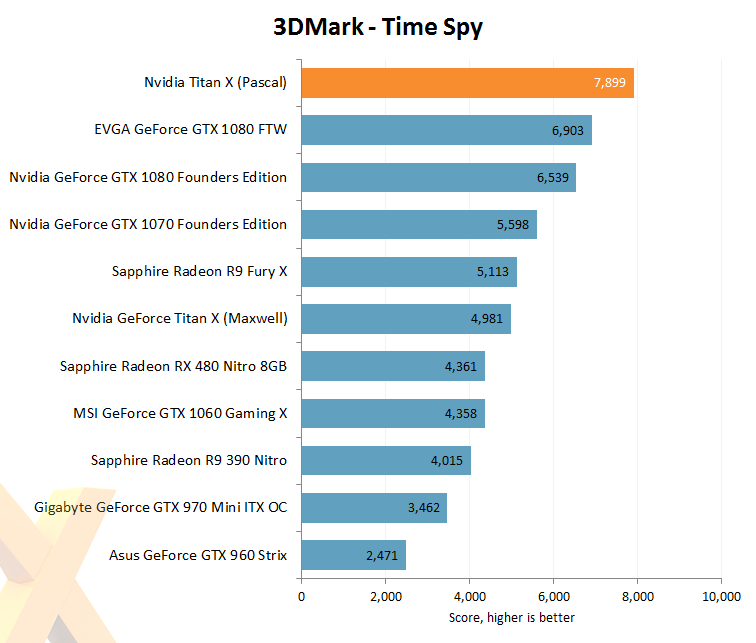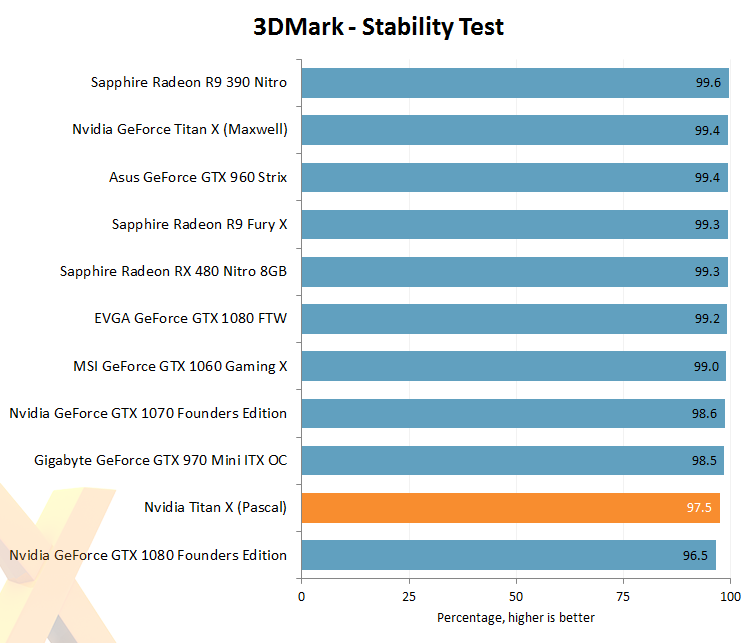3DMark Time Spy
 |
3DMark is the latest version of this hugely-popular synthetic benchmark. Making use of DX11 features such as tessellation, compute shaders and multi-threading, it provides modern-day results and is available as a free download.


The gap is less evident in the newer 3DMark test because it appears to put a larger load on the GPU.
Let's talk about that cooler for a second. It just manages to pass the stability test, which requires a 97 per cent run-to-run rating. What happens is the GPU immediately boosts to around 1,700MHz core but then realises it cannot keep at this speed with the reference cooler. 10 or so seconds later the core speed drops to a consistent 1,520MHz, or near Nvidia's specification, and then stays around there as the GPU temperature is maintained at 83°C.
The cooler holds back ultimate performance at stock speeds. We know this because simply running the same test again, this time with the power target increased to 120 per cent, gives a score of 8,136 without touching the frequencies. The extra power enables the GPU to flex its muscles and run at 1,700MHz core. Nvidia decides not to do this because the cooler then becomes very loud. This GPU would really fly with a waterblock.









